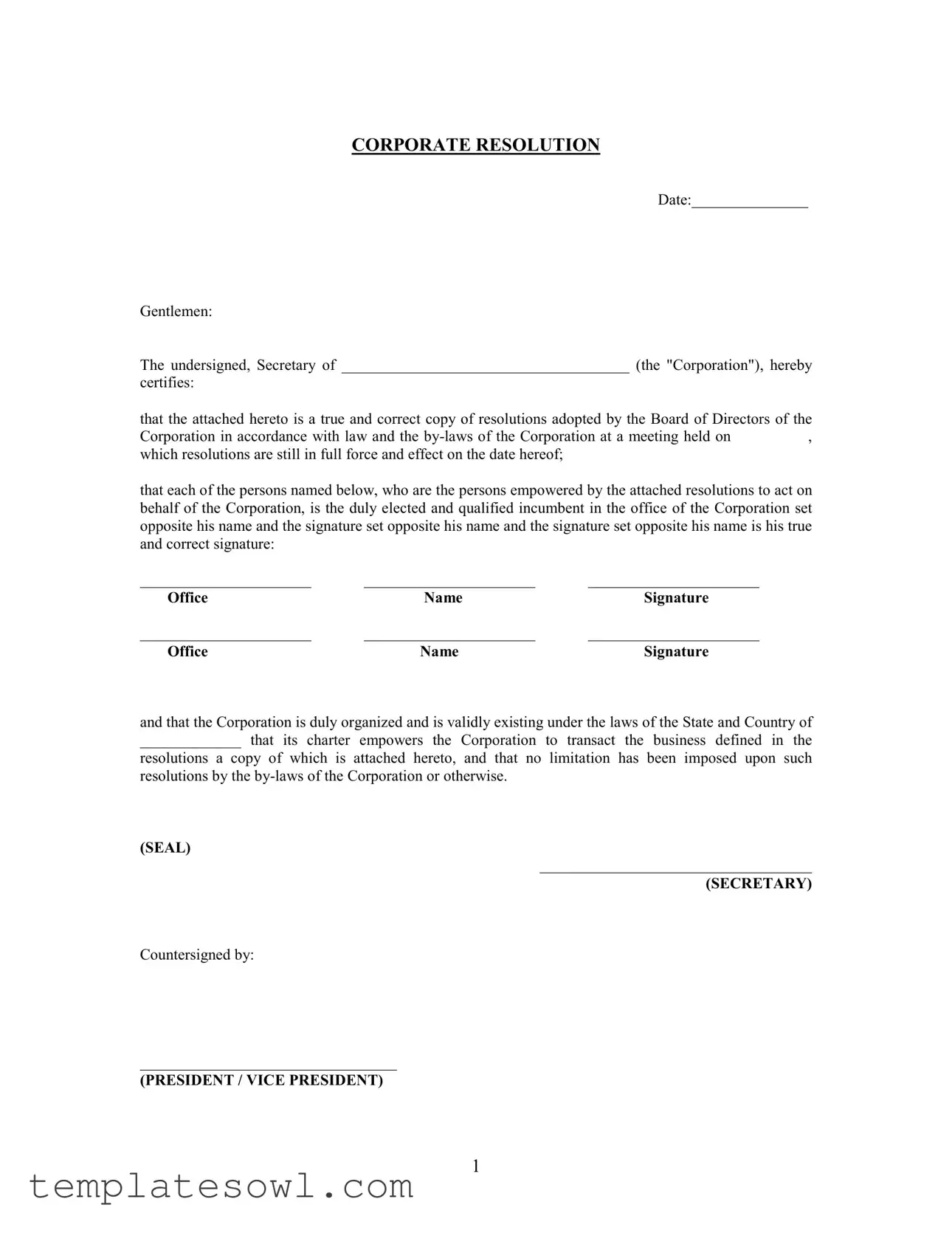What is a Corporate Resolution Form?
A Corporate Resolution Form is an official document that records decisions made by a corporation's Board of Directors. It is used to signify that the board has formally adopted certain actions or resolutions, and it serves as a legal record of these decisions. This form typically includes essential details such as the date of the resolution, the names and positions of individuals authorized to act on behalf of the corporation, and the specific powers granted to those individuals.
Who needs to sign the Corporate Resolution Form?
The Corporate Resolution Form must be signed by the corporation's Secretary and can also include a countersignature from the President or a Vice President. The signatures of the individuals empowered by the resolutions must also appear on the document, confirming their authority to act on behalf of the corporation. Each signatory should be an officially elected officer of the company.
What information is required on the form?
Key information needed on the Corporate Resolution Form includes the date of the meeting where the resolutions were adopted, the name of the corporation, the offices of the empowered individuals, and their signatures. Additionally, the form should include details about the specific powers and actions authorized by the board, such as establishing accounts and managing investments.
How long is a Corporate Resolution effective?
A Corporate Resolution remains effective until written notice of its revocation is received by the parties involved, such as brokers or financial institutions. If no notification is provided, the brokers and other third parties can rely on the document as an ongoing authority for actions defined within it. This ensures business continuity and clarity for all parties involved.
Can the powers granted be changed later?
Yes, the powers granted via a Corporate Resolution can be amended. If there are changes in the positions or powers of the individuals authorized in the resolution, the Secretary of the Corporation must certify these changes in writing. This creates a clear record and terminates previously granted powers, ensuring that only current officials hold authority.
Why is an attorney's opinion sometimes required?
Occasionally, an attorney's opinion may be required to validate the existence of the corporation and confirm that it is authorized to conduct the business outlined in the resolutions. This serves to protect the parties involved by ensuring there are no legal limitations on the powers granted by the resolution.
What happens if the Corporate Resolution is not provided to a Broker?
If the Corporate Resolution is not provided to a broker, it may lead to complications or invalid transactions. The broker depends on the certified copy of resolutions, specimen signatures, and other documentation to confirm who is authorized to act on behalf of the corporation. An absence of this documentation may result in refusal to transact or an inability to finalize deals until the necessary documentation is provided.
Is a Corporate Resolution Form necessary for all business transactions?
While not every business transaction requires a Corporate Resolution Form, it is essential for significant actions such as opening bank accounts, entering contracts, or making investments. This document ensures that the authority for these actions is clearly defined and legally recognized, reducing the risk of disputes or unauthorized activities.

